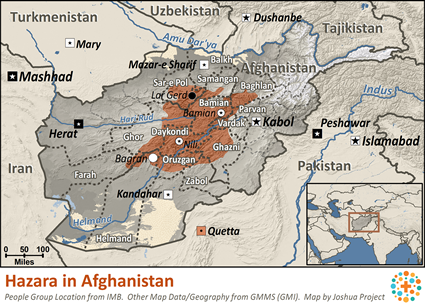Can you name a Muslim people who have been persecuted by other Muslims within their own country? The Shia Muslim Hazara of Afghanistan have been the recipients of attacks by Afghan Sunni Muslims for centuries. At one time, Hazaras formed half the population of the nation. Today they make up only about one tenth. Some Hazara have settled in cities, but the majority still carry on their traditional, nomadic lifestyle of seasonal migration with their herds of goats, sheep, cattle and horses.
The areas where the Hazara live are difficult to reach in summer and nearly impossible to enter in winter. Also, if a Hazara person becomes a follower of Christ, their community will see them as a traitor to their people and treat them as such.
Ask the Lord to give each Hazara the opportunity to hear a clear presentation of the gospel.
Pray for peace in Afghanistan and that Hazara parents would be able to provide for their children.
Pray for a movement to Christ among the Hazaras.
Pray for teams of medical professionals to visit the Hazara and encourage them to allow the Great Physician to heal them.
A tiny fraction of the Hazara has become believers. Pray they would find fellowship with others and they would grow in the Holy Spirit together.
Scripture Prayers for the Hazara in Afghanistan.
| Profile Source: Joshua Project |


























